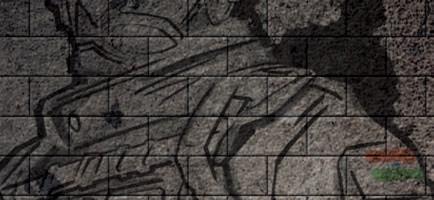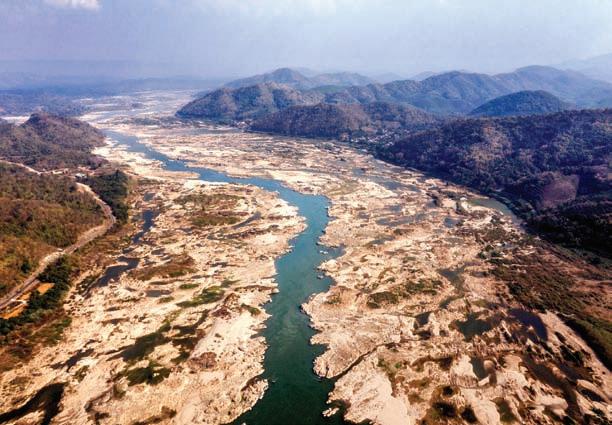
32 minute read
QUAD - From Life Support to Shaky Adolescence
I
Advertisement
By AMB VISHNU PRAKASH (IFS, RETD)
t is nothing short of a miracle that QUAD has lived to turn 13. It was born of a reluctant union, mired in self doubt and absence of fanfare. It was not loving parental care but unintended external sustenance that kept its oxygen flowing. Former National Security Advisor Shivshankar Menon was scathing – “QUAD comprises three islands and a peninsula with a hole in the middle.”
Since I may have piqued your curiosity, let me elaborate. Speaking at the Indian Parliament in August 2007 Japanese Prime Minister Shinzo Abe eloquently outlined the vision of a “BROADER ASIA” made possible by the “dynamic coupling” of the Pacific and the Indian Oceans or “Confluence of the Two Seas” to further freedom and prosperity.
Hailing the democratic credentials of both maritime nations, noting their vital interests in the security of sea lanes and underlining their common intent to form a “Strategic Global Partnership” he mooted the idea of like-minded nations such as Japan, India, the US and Australia joining forces to form an “Arc of Freedom and Prosperity.” It would be an “open and transparent network…. (to)… allow people, goods, capital, and knowledge to flow freely.” He called upon both sides to come up with a framework of security cooperation over the following years.
However, Indian leaders were hesitant to buy into the idea. It spoke volumes of Mr. Abe’s tenacity and persuasive powers that the said nations came on board. That is how the Quadrilateral Security Dialogue’ or QUAD came into being, even though the seeds got planted in December 2004 when Australia, India, Japan and the US, actively collaborated in rushing disaster relief to the tsunami hit nations. The speed of India’s response came as a pleasant surprise to her partners.
The first meeting at the level of officials (Additional Secretaries) was discreetly held in Manila on May 25, 2007, on the margins of the ASEAN Regional Forum (ARF) event. Ironically almost immediately thereafter all participants, excepting Japan, sought to downplay its significance. PM Manmohan Singh reportedly assured President Hu Jintao that there was “no question of ganging up” against China. Defence Minister Brendan Nelson stated that Australia favoured limiting the initiative to trade, culture and other issues outside the domain of defence and security (The Japan Times).
China, which is given to shrill protestations even on matters remotely impacting its interests issued demarches to the concerned capitals, insinuating that QUAD was directed against them, even though all participants tried to dispel that notion. As luck would have it, Australian Prime Minister John Howard was replaced by Kevin Rudd a mandarin speaking Sinophile, who promptly disassociated Canberra with the nascent dialogue. A relieved India gladly followed suit. Meanwhile, Japanese PM Abe resigned on health grounds. That effectively spelled the end of QUAD.
Ten years, which used to be a mere blip in human history, appears to have become a lifetime in the 21st century. The global scenario changed dramatically between 2008 and 2017. Donald Trump, an iconoclast, became the new occupant of the White House and was getting increasingly restive at the wilful disregard of the rules of engagement by China. Shinzo Abe was back as the Prime Minister of Japan since 2012. Sino-Japanese were getting increasingly fraught.
Despite US$115 billion worth of exports to China in 2017, Australian sentiment was noticeably turning negative due to allegations of extensive and covert interference in Australian society and polity, by the Chinese government. Notwithstanding a perception of being soft on China and having a Chinese daughterin-law, PM Malcolm Turnbull refused to join Border and Road Initiative (BRI).
What riled China the most was Australia’s ‘2017 Foreign Policy White Paper’ which stated “Australia is particularly concerned by the unprecedented IT SPOKE VOLUMES OF MR. ABE’S TENACITY AND PERSUASIVE POWERS THAT THE SAID NATIONS CAME ON BOARD. THAT IS HOW THE QUADRILATERAL SECURITY DIALOGUE’ OR QUAD CAME INTO BEING, EVEN THOUGH THE SEEDS GOT PLANTED IN DECEMBER 2004 WHEN AUSTRALIA, INDIA, JAPAN AND THE US, ACTIVELY COLLABORATED IN RUSHING DISASTER RELIEF TO THE TSUNAMI HIT NATIONS
The then Japanese Prime Minister Shinzo Abe in Indian Parliament (File photo)
Malabar Exercise (File photo)

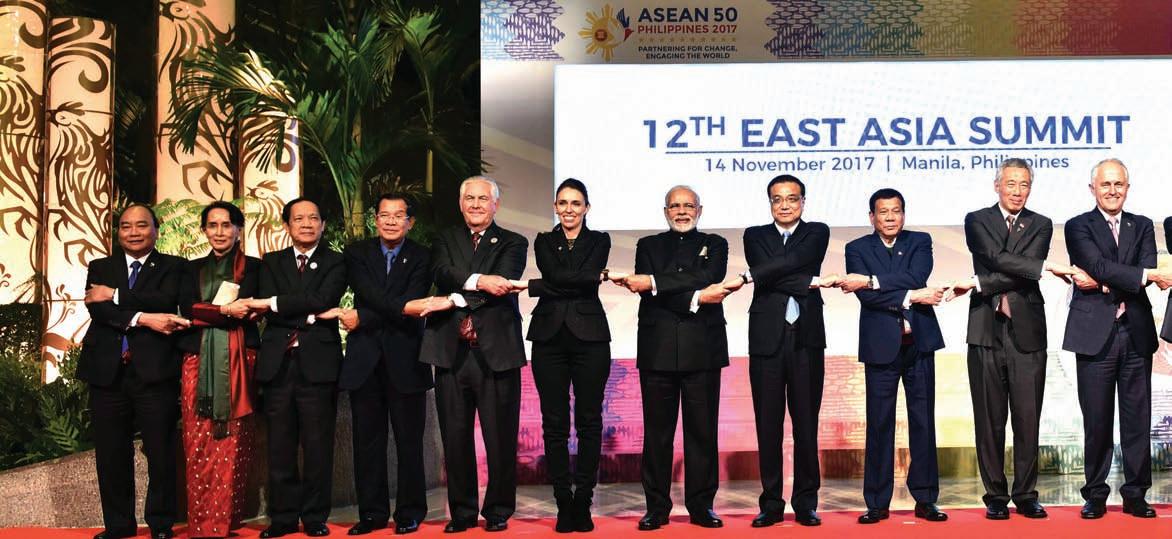
PM Narendra Modi with his ex-Japan counterpart Abe

pace and scale of China’s activities. Australia opposes the use of disputed features and artificial structures in the South China Sea (SCS) for military purposes.”
In India, Narendra Modi, a decisive leader had become the Prime Minister and Xi Jinping, an overly ambitious princeling, the President of China. Despite regular meetings between them, bilateral ties were getting more complicated. Incursions across the Line of actual control (LAC) were degenerating into standoffs. A 73day tense standoff had taken place near the India China Bhutan trijunction of the Doklam plateau in June / August 2017.
Xi Jinping was quick to concentrate power in his hands and stamp out internal dissidence. He discarded the frayed mask of “peaceful rise of China” and pledged to erase the so-called “Century of humiliation.” He spoke of the “Chinese dream of great rejuvenation of the Chinese nation” and set about rapid military modernisation including naval build up, acquisition of ports in Asia and beyond for setting up military bases (with the help of BRI), elbowing out the US as the premier infotech power and imposing a China-centric regional order.
Such were among the considerations that led to resurrection of QUAD in 2017. Former Foreign Secretary Shyam Saran notes that PM Abe again persuaded - “India to agree, because he was convinced of India’s critical role as a security partner.”
Senior officials of the four democracies, sat down for consultations as QUAD in Manila on November 12, 2017 on the margins of the ASEAN summit, after a hiatus of 10 years. They exchanged notes on promoting peace, stability and prosperity in the Indo-Pacific Region (IPR) and “agreed that a free, open, prosperous and inclusive IPR serves the long-term interests of all countries in the region and of the world at large.” (Indian Ministry of External Affairs statement). Australia let it be known that the need for a “rules-based order in the Indo-Pacific and respect for international law, freedom of navigation and overflight” was also discussed.
India continued to emphasise that QUAD was not directed at any country, but was no longer diffident about the grouping. Her partners were not so certain. “But the fate of the QUAD is still fragile--- Today, following a burst of concern about Chinese influence, Australia is all in. So are the United States and Japan. That leaves India, where New Delhi may be getting cold feet.” (Foreign Affairs magazine in July 2018).
It soon became evident that scepticism about India was unfounded. In September 2019 the QUAD dialogue was elevated to the level of foreign ministers,

who met in New York during the UN General Assembly session. Although no joint statement was issued yet the meeting underlined that QUAD was there to stay. US Secretary of State Mike Pompeo tweeted on September 27 last year - @SecPompeo “ Positive meeting with @MarisePayne, @ DrSJaishankar, and @moteging. We discussed our shared interest in building a free and open #IndoPacific, denuclearisation of #NorthKorea, and joint efforts to promote regional stability.”
Efforts are currently underway to expand the base of QUAD by inducting more like-minded nations. QUAD partners and most Indo-Pacific (IP) states recognise the need for a strengthened Asian security architecture, preferably led by the US. That is precisely what China does not want, but its aggression, territorial ambition and disregard for a rule-based international order, has left the IP countries without much choice.
Earlier in May, partly in response to the Coronavirus pandemic, Secretary Pompeo convened a virtual QUAD plus meeting to which South Korea, Israel and Brazil were invited. Philippines, Indonesia, Vietnam, New Zealand, Singapore, Taiwan, France and Sri Lanka have also been associated with other QUAD plus interactions. It is moot if the invitees, other than France, have the requisite political will and heft to contribute meaningfully to the QUAD process. The fact remains that most nations have adopted a hedging strategy till there is more clarity about the evolving geostrategic landscape.
Meanwhile, QUAD consultations are picking up pace. India hosted a virtual meet of senior officials on September 25 when “regional and global issues of common interest” including counter-terrorism, cyber and maritime security in IPR were discussed. New Delhi is also planning to convene a foreign minister level meet which would be significant in itself. However, the next in-person QUAD foreign ministers’ consultation is likely to take place in Tokyo possibly in October itself. It would underline continuity of Abe’s policy under his successor Prime Minister Yoshihide Suga.
QUAD is more than a mechanism to restrain Chinese adventurism (even if parties are bashful of acknowledging it) and has the potential of impacting geopolitics, once it comes of age. Yet there are imponderables. The interplay of Sino-American equations, both bilateral and external, would have a huge bearing on the grouping. The dramatic swing in Washington’s foreign policy orientation under the Trump administration has made all capitals cautious about being in lockstep with the US, especially when it comes to staking out a position on China. All the same, QUAD nations would have take that risk, as they take measured steps towards enhancing collaboration.

–Former Indian Ambassador to Canada and South Korea, the writer is a foreign affairs specialist and columnist. He also held the positions of MEA Spokesperson and Consul General, Shanghai, China. SENIOR OFFICIALS OF THE FOUR DEMOCRACIES, SAT DOWN FOR CONSULTATIONS AS QUAD IN MANILA ON NOVEMBER 12, 2017 ON THE MARGINS OF THE ASEAN SUMMIT, AFTER A HIATUS OF 10 YEARS. THEY EXCHANGED NOTES ON PROMOTING PEACE, STABILITY AND PROSPERITY IN THE INDOPACIFIC REGION (IPR) AND “AGREED THAT A FREE, OPEN, PROSPEROUS AND INCLUSIVE IPR SERVES THE LONG-TERM INTERESTS OF ALL COUNTRIES IN THE REGION AND OF THE WORLD AT LARGE”

heunis Christoffel Botha is CEO of AL TARIQ. AL TARIQ is an EDGE Group entity and regional leader in aerial T weaponry and a manufacturer of precision-guided munitions (PGMs). With over 35 years of experience, he served as Business Unit Manager of Stand-Off Weapons group in Denel Dynamics (previously known as Kentron) in South Africa in his previous role. Besides various performance awards in his kitty, Theunis Botha holds a National Diploma from Pretoria Technikon in South Africa, and has completed several courses in Project Management and engineering related disciplines. In an interview to Ajit K Thakur, Editor, Raksha Anirveda, Mr Botha describes about the company’s journey in becoming a world class manufacturer of PGMs, and weaponry systems. Edited Excerpts:
Tell us about AL TARIQ being a part of EDGE Group? Are you able to leverage your presence within the Group and receive support from the other companies to provide cutting-edge products and services to customers?
EDGE is a UAE-headquartered advanced technology group for defence and beyond, consolidating over 25 entities and employing 12,000 brilliant minds across fivecoreclusters – Platforms & Systems, Missiles & Weapons, Cyber Defence, Electronic Warfare & Intelligence, and Mission Support. The entities under EDGE are grouped according to their specialised domains, all of which are complementary to each other. This enables the respective Entity Leaders and Cluster Presidents to be better synergised enabling us to leverage the group’s advanced technology capabilities and accelerate growth with efficiency.
AL TARIQ is part of the Missiles & Weapons cluster within EDGE. The consolidation of existing defence entities has enabled us to further accelerate and leverage what has already been established, build productive collaborations, while tapping into the capabilities of the other entities across the group. With EDGE now having enough critical mass to act as the anchor player in the UAE, we
have the prospect of developing complete systems and our own parts locally, while also having the opportunity to further enhance our manufacturing capabilities. We have strengthened our capabilities by working very closely with several companies across EDGE Group.
AL TARIQ, a world-class manufacturer of Precisionguided Munitions (PGMs), partnered with Denel Dynamics, South Africa. What benefits has your company reaped out of this partnership, namely in terms of technology, innovation and production?
AL TARIQ had a Joint Venture with Denel Dynamics, South Africa’s largest government-owned defence manufacturer, in 2012. Following the establishment of such partnership, AL TARIQ launched its ‘Al Tariq’ modular kits to mark the milestone. As of today, these remain our flagship products, and we are proud to say that the ‘Al Tariq’ family was jointly developed with Denel Dynamics, and based upon Denel’s Umbani weapon.
Since then, we have leveraged our partnership with Denel Dynamics to enhance our engineering capabilities and have implemented a range of operational features through cutting-edge technology and continuous innovation into the Block II version of Al Tariq. We have also enhanced our production capacity through cost saving measures and continuous improvement in our operations.
Please elaborate on the range of products AL TARIQ has in its current portfolio - detailing the categories and subcategories of products.
We design and produce the ‘Al Tariq’ range – a modular family of precisionguided munitions designed for the Mark 81 and Mark 82 aerial bombs. We use a range of guidance and propulsion technologies to convert unguided aerial weapons into high-precision, longer-range focused munitions. The family consists of the ‘Al Tariq-S’ (Standard Range) and ‘Al TariqLR’ (Long Range) with a range of different seekers, providing operationalmissionflexibilityto the user. The long range includes a wing-kit that increases the range from 45 kilometres to 120 kilometres.
The ‘Al Tariq’ family will be expanded in the future to include other versions. We are in the process of integrating these onto more platforms to increase the number of applications.

The pandemic impact globally has been severe in many business sectors including the defence industry.
AL TARIQ IS PART OF THE MISSILES & WEAPONS CLUSTER WITHIN EDGE. THE CONSOLIDATION OF EXISTING DEFENCE ENTITIES HAS ENABLED US TO FURTHER ACCELERATE AND LEVERAGE WHAT HAS ALREADY BEEN ESTABLISHED, BUILD PRODUCTIVE COLLABORATIONS, WHILE TAPPING INTO THE CAPABILITIES OF THE OTHER ENTITIES ACROSS THE GROUP
Do you think that the recovery path in near terms for the defence industry will be sluggish or moderate? How has AL TARIQ coped with the pandemic? Is it on track with its growth trajectory?
The pandemic has definitely forced us to adapt and alter the way we work and operate. We are continuing to enhance our ‘Al Tariq’ range of precision-guided munitions (PGMs) and are currently in the process of starting our planned production for the Block II version towards the end of 2020. We are also expanding the range to include the Mk 83 and Mk 84 in the next
AL TARIQ-LR
LR system includes a wing kit that increases range to 120km. Single modular kit for Mk 81 and Mk 82 munitions Fire and forget, high accuracy LOBL & LOAL capability Range up to 120 km Dual-mode seekers GNSS/INS only GNSS/INS/SAL GNSS/INS/IIR Programmable attack profiles Moving target and off-axis attack capability Wireless or MIL-STD-1760 integration Simplified user logistics ITAR-free solution Integrated on various fighter aircraft

An AL TARIQ employee at its assembly unit
12-18 months. The Block II version features a number of new upgrades.
In terms of coping with the pandemic challenges, like any other company, we have been ensuring that our employees have the means to perform their duties safely and efficiently, while maintaining business continuity. All operations and business functions are continuing as normal despite the unprecedented pressures.
Very recently, the Government of India has liberalised its policy to promote private defence industry along with DPSUs. It has also raised FDI in defence under the automatic route from 49 per cent to 74 per cent. How is it going to benefit global defence industry? Do you have any plan to invest in India in the near future? Does AL TARIQ have any collaboration in India for its products? If yes, with which company? Do you have any future plans to collaborate with Indian

companies to co-develop and co-partner for product innovations?
The Indian defence sector has huge potential to attract foreign direct investment. The proposed increase in the FDI limit from 49 per cent to 74 per cent is a welcome step which will see many key players investing in the sector. It will also encourage multinationals to set up manufacturing bases in India or acquire local companies.
AL TARIQ recognises the rapidly growing Indian market, and we are involved to address the future requirements of the Indian Armed Forces. We have engaged with Indian defence companies to address the future “Make in India” programmes for the Indian Ministry of Defence. This will entail the production and future co-development of high technology systems as required by the Indian Defence Forces.
GHASL – A STRATEGIC GROWTH PARTNER FOR AEROSPACE BUSINESSES G

MR Hyderabad Aviation SEZ Limited (GHASL) is a 100% subsidiary of GMR Hyderabad International Airport Ltd. (GHIAL). GMR Aerospace & Industrial Park is the key product offering of GHASL, which is housed in GMR Hyderabad Airport City operated by GMR Airport Land Development (ALD).
Aman Kapoor, Chief Executive Officer

GMR Aerospace & Industrial Park, is a modern, state-of-the-art Airportbased multi-product Special Economic Zone (SEZ), also consisting Airport based Free Trade Zone - GIFTZ (GMR International Free Trade Zone). The Park offers Special Economic Zone (SEZ) for units with predominantly export oriented business as well as Non SEZ land for customers who wish to deal in the Domestic Tariff Area within India.
GMR Aerospace & Industrial Park provides ‘ready-to-use’ industrial infrastructure allowing companies to focus on their core business. By virtue of the Park being housed within RGIA, the Aerospace & Industrial Park enjoys greater security. Supply of utilities like power and water are highly reliable. The Park also enjoys the complete airport ecosystem like proximity to Air Cargo Terminal, availability of Hotel, reliable and affordable Transport, Emergency Services, Security, etc.
To foster and boost exports, GMR Hyderabad International Airport Limited as a company and developer of the RGIA campus, established airport based multi-product SEZ. The SEZ includes land area of ~20 acres notified as Free Trade Warehousing Zone to complement supply chain distribution, warehousing, storage, value addition and packaging. This is the only Airport-based FTWZ in India. The fact that the FTWZ is inside the Airport makes it unique which will bring down the transportation costs and reduce the turnaround time for movement of man and material.
Currently, GMR Aerospace & Industrial Park has several global clients viz. CFM Aircraft Engine Support South Asia Private Limited (CFMAESSA) providing training on CFM and LEAP engines; SAFRAN Electrical & Power India Private Limited (SEPIPL) for assembling of Cable Harnesses to be used in SAFRAN Engines; SAFRAN Aircraft Engine; United Technologies Corporation India Private Limited (UTCIPL) for providing training on Pratt & Whitney engines; Turbo Aviation, GMR Aero Technic; SpiceXpress; Global AeroTech India Pvt. Ltd.; SAS Applied Research and Lab Materials Pvt. Ltd.; Analinear Imaging Systems Pvt. Ltd.; Casper Pharma Private Limited; Cronus Pharma Specialities India Pvt. Ltd; Multisorb Technologies India Pvt. Ltd. (MTIPL); among others.
The site location of GMR Aerospace and Industrial Park has been strategically chosen with emphasis on connectivity. The Park is well connected by air, road and rail, including robust connectivity to ports. This strategic location offers businesses an easy access to suppliers, enabling efficient supply chain management. These linkages present the benefits of faster turn-around time and maximization of Productivity for the esteemed clients..
DAWN OF A DIALECTICAL EVOLUTION IN WARFARE - CONTACTLESS WAR
With the focus shifting to next-generation drones, which are essentially unmanned fighter jets and armed helicopters that are currently under development, the dawn of contactless warfare is now a reality
By MAJ GEN G SHANKARNARAYANAN (RETD)
C
onflict Spectrum: The days of the blitzkrieg is slowly setting into the twilight of military doctrine while a new dawn of contactless battle is surely but steadily visible on the horizon. This is attributable to the growing doctrinal shift is achieving the end state by means other than war albeit under a nuclear umbrella which limits the threshold of conflicts. This paradigm of contextualisation of war / conflict itself warrants a closer examination. The last known conventional mechanised operation was seen during the Gulf war codenamed Operation Desert Storm in 1991.
Movement of Indian Army vehicles in Galwan Valley
From a classical military perspective it was a war waged by an array of nations forming a coalition forces from 35 nations led by the United States against Iraq in response to Iraq’s invasion and annexation of Kuwait arising from oil pricing and production disputes. The contours of the operation conformed to the traditional concepts of relentless airstrike exhorting shock and awe, mobilisation of multinational troops and build designed to hold the adversary followed by a predetermined combined arms outflanking mechanised offensive and finally consolidation leading to complete annihilation of the Iraqi forces.
The next decade saw the proliferation of sub conventional conflict across the globe. Warring nations or radical groups resorted to a low cost option of engaging non state actors to pursue their political agenda hoping to achieve defined conflict termination, which seldom has been the case. While the cost has been disproportionately low in keeping the pot boiling, the incalculable sufferings and loss of human lives defies logic. Nonetheless
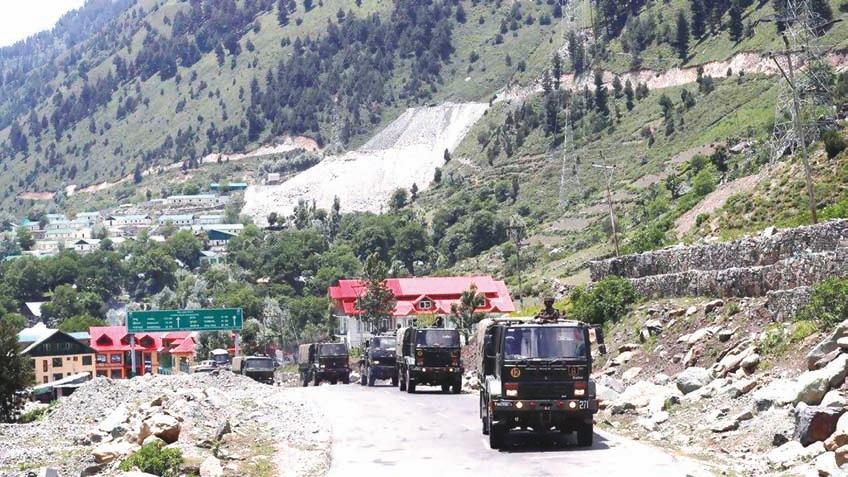
Saudi Arabia’s Aramco oil field, which faced drone attacks recently
determined governments have resorted to brute force and brought this menace under control. Sri Lanka, Bosnia and Herzegovina are examples. However closer home, cross border terrorism has found no tangible answer despite multiple strategies including a localised limited offensive and a cross border surgical strike. In fact the activation of the LAC by the eastern adversary using a combination of LAC transgression backed by conventional buildup marks a strategic shift in the conflict continuum.
The compulsions of ensuring territorial integrity while restraining conflict escalation matrix is indeed a complex border management challenge. Therefore our response has also been equally measured yet aggressive and determined albeit limited in scope and depth just enough to facilitate strategic messaging. On the contrary China’s action resonates its policy of whittling the Chinese Communist Party’s (CCP’s) grand strategy to realising its national objective of achieving the “great rejuvenation of the Chinese nation.” Stemming from this ideology is the Chinese military strategy that ordains the People’s Liberation Army (PLA) to defend its national sovereignty and territorial integrity even if it at the cost of an expansionist protocol. In so doing China has mastered the art of informationalised, irregular warfare that largely conforms to the western concept of hybrid warfare where soft power and covert operations play a predominant role.
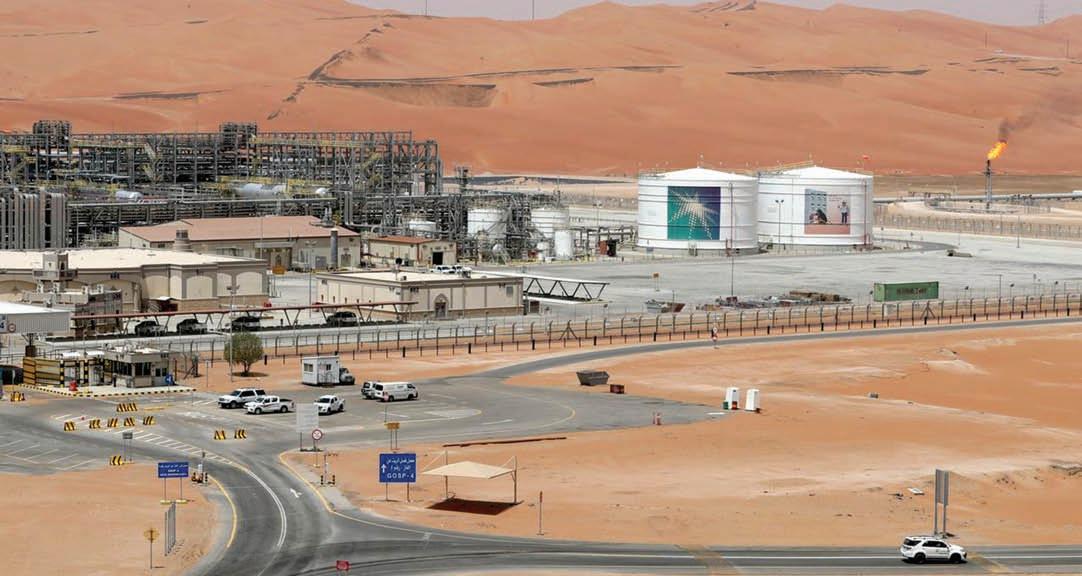
CONTACTLESS WAR
Informationalised warfare or loosely coined hybrid warfare is being termed as sixth generation warfare. This dialectical development occurs sequentially and in parallel at the political, strategic, operational and tactical levels. It deals with long-range, high-precision engagements that can be launched from weapon platforms on land, sea, air and space intimately intertwined with information, psychological and irregular warfare. It is designed to undermine the adversary’s gross national power (GNP) while simultaneously eroding the military potential, made possible by revolution in military affairs (RMA) fuelled by rapid and intense technological breakthrough. This type of warfare is being called ‘contactless war’ besides the soft power. Sixth generation warfare has three main objectives: a) Defeating an opponent’s armed forces (in his own territory), b) Destroying an opponent’s economic activity and potential – and c) Subverting or changing an opponent’s political system. The growing influence of Artificial Intelligence (AI) and Machine Learning (ML) shall soon usher in the seventh generation where orchestration of the battle will be remote while precision engagement at the physical level will be by robotic unmanned entities - a replica of Star wars. INFORMATIONALISED WARFARE OR LOOSELY COINED HYBRID WARFARE IS BEING TERMED AS SIXTH GENERATION WARFARE. THIS DIALECTICAL DEVELOPMENT OCCURS SEQUENTIALLY AND IN PARALLEL AT THE POLITICAL, STRATEGIC, OPERATIONAL AND TACTICAL LEVELS
ARMED UAVS – THE MAIN STAY OF CONTACTLESS WAR
It is in this context that unmanned aerial system (UAS) or drones have emerged as an undisputable champion of contactless warfare, be it traditional reconnaissance, target acquisition and tracking or precision engagement. If fact drones are unequivocally changing the character of warfare in strategy, action, and perception across the continuum of conflict. The drone attack by Houti Rebels on Saudi Aramco oilfield on September 14, 2019 and the precision engagement by the United States on Bagdad International Airport eliminating Maj Gen Qasem Soleimani of Iran on January 3 this year are examples of future combat engagements. Thus the era of armed drone is here to stay and find effective use in prosecution of the contactless warfare. On the contrary its rapid proliferation among states and non state actors and militant groups alike poses a new global challenge. Further miniaturisation and affordability make these as excellent tools in their hands to execute destructive intent in a contactless manner.
General Atomics MQ-9 Reaper
GLOBAL PERSPECTIVE
More than 10 countries have conducted unmanned combat aerial vehicle (UCAV) or armed drone strikes: the United States, Israel, the United Kingdom, Pakistan, Iraq, Nigeria, Iran, Turkey, Azerbaijan, Russia and the United Arab Emirates (UAE). But many other countries, including Saudi Arabia and China among others maintain armed drones in their arsenals. India is a prospective entrant to this elite club. Therefore as per America’s World of Drones database, countries are sorted into three groups: those that use drones in combat, those that possess armed drones but have not used them in combat, and those that are developing armed drones. In the American parlance, drone capabilities are classified according to the US Air Force tier system. Tier I includes low altitude, low endurance drones like the Orbiter; Tier II is comprised of medium altitude, long endurance drones like the Reaper or the retired Predator; and Tier III applies to high altitude, long endurance drones like the Global Hawk. Mini and micro drones are not classified in the tier system.
The United States and Israel are the biggest producers of drones followed by China. America’s leading combat drones are the MQ-9 Reaper and the Global Hawk. MQ-9 Reaper Drone was used in the drone strike at Bagdad. Harop (or IAI Harpy 2) an Israeli drone is a loitering munition developed by the MBT division of Israel Aerospace Industries (IAI). It is an anti-radiation drone that can autonomously home in on radio emissions and strike the target by itself, being self destructive. If a target is not engaged, the drone will return and land itself back at the base.
China is also a major drone manufacturer and specialises in developing the Cai Hong family of CH 4, CH 5 and CH 7 armed drones. The CH-7 is a stealth flying fixed wing UCAV similar to the X-47B, with a 22m wingspan and 10m length. It can fly at 920 km/h and at an altitude of 13,000m. Endurance is about 15 hours and its operational radius is 2000 kilometres. It can carry antiradiation missiles and standoff weapons. It can intercept radar signals, and simultaneously detect, verify and monitor high-value targets, such as hostile command stations, missile launch sites and naval vessels and carry out strikes. India on the other hand is one of the largest importers of drones internationally. According to a Business Insider report based on Stockholm International Peace Research Institute (SIPRI) data, India accounts for approximately 22.5 per cent of drone imports from 1985-2017. In addition to its imports, India also has an indigenous UCAV Rustom-II, a Medium-Altitude Long-Endurance (MALE) drone, in its drone arsenal.

INDIA’S PERSPECTIVE
India’s UAV inventory in the armed forces consists of Searchers Mark I and II followed by Heron, all from Israel. These are mere surveillance UAVs with an operating ceiling of 15,000ft. However being susceptible to radar interception it warranted a higher ceiling. Accordingly the Indian Army acquired the Heron which could operate at an altitude ceiling of 30,000ft. These acquisitions by the Army were followed suit by the Indian Air Force and the Indian Navy each with a service specific mandate and operational autonomy. However the clamer is now on for acquiring Harop armed UCAV from Israel.
While acquisitions have been the order of the day, indigenous development and manufacture have also been given the right impetus. DRDO has developed a series of drones in the MALE category but their operational viability is yet to be established. Hence under the present eastern Ladakh imbroglio, it is but natural to look towards foreign vendors. That notwithstanding, there are a few collaborative initiatives with ELBIT Systems and Rafael Defense, both exponents in Israeli defence and aerospace. It is in this light that the government’s “Atmanirbharta” drive is a welcome step in placing some category of drones in the negative list to boost home grown production. It is to be seen if the Indian drone manufacturing fraternity can rise up to the challenge to meet the desired expectations.
EMPLOYMENT IN OUR ENVIRONMENT

UAVs are great force multipliers and are being effectively used in surveillance missions across our operational spectrum all along the international border (IB), Line of Control (LoC), Line of Actual Control (LAC) and Actual Ground Position Line (AGPL). Their operational efficacies in high altitude regions have been remarkable. In a conventional engagement these UAVs will provide target inputs for artillery and missiles engagement followed by Post Strike Damage Assessment. In addition, the concept of swarm drone attack against mechanised elements in the contact battle as well as seek and destroy missions against command and control centres in near real time will be a game changer. All this is possible due to the very high resolution optics carried on board for precision engagements. Under these operational necessities the next logical step should be to weaponise these platforms for effective target destruction.
Although a literal action of modifying the existing drone fleet is desirable but may not be technically feasible due to the change in payload configurations. Hence acquisition of Harop shall soon fill this void. The employment envisages surveillance and destruction of selected targets by loitering missiles and PSDA. Harop a self destructive Killer drone is in fact a loitering missile capable of seeking targets and destroying them with pin point accuracy having an operational range of 1,000 km and flight endurance of six hours. It can be launched against land and sea based targets from ground, sea and air. It will be an excellent counter to China’s Cia Hong-4 and Cia Hong -5 and Cia Hong 7 UCAV platforms. Undoubtedly armed drones shall form the main stay of contactless war.
TACTICAL UAV CAPABILITY
UAVs are now an integral part of all operations across the spectrum of conflict. An organisational issue that needs immediate attention is the development of tactical UAV capability. As of now all the UAV capability rests at the directional level. Whereas there is an urgent need for mini UAVs to exploit fleeting opportunities at the tactical level. It is here that our indigenous commercial drone manufacturers have the requisite wherewithal in terms of range, endurance, thermal imaging, real time video transmission and autonomous capabilities.
In fact, a fully autonomous drone only requires the way points to be assigned within a predetermined geo-fence. The drone can take off on its own, UNMANNED AERIAL SYSTEM OR DRONES HAVE EMERGED AS AN UNDISPUTABLE CHAMPION OF CONTACTLESS WARFARE, BE IT TRADITIONAL RECONNAISSANCE, TARGET ACQUISITION AND TRACKING OR PRECISION ENGAGEMENT
HAL to build Unmanned Combat Aerial Vehicles in collaboration with Israel

DRDO Rustom-II
fly along the assigned waypoint besides simultaneously track the way with real time transmission of video to the ground control station (GCS) and complete the given mission with very little manual intervention. It also has failsafe modes as well an auto return mode due to break in communication or low battery power, built into it.
DRONES IN THE CURRENT FACEOFF
The situation along the LAC is extremely volatile. Over the past 30 years, the PLA have nibbled into the LAC with impunity while the Indian Army have merely resorted only to patrolling up to the patrolling points as defined by the China Study Group which falls well short of Indian perception line. However the recent conflagration has witnessed a paradigm shift in border management. The resolve to undo status quo and protect every inch of ground backed by a strong political will and effective diplomatic machinery has prompted the military to undertake bold actions as a quid pro quo in areas that can be exploited by the Chinese. The dilemma therefore is the trustworthiness or otherwise of the Chinese to undertake disengagement and de-escalation as decided by both sides and remain committed to it.
Therefore in the absence of any Chinese guarantee that the PLA will not reoccupy those positions in the event of its vacation by the Indian troops, the situation calls for a firm deployment almost permanent in nature. In fact just as PLA is holding dominant positions up to Finger 4 on the north bank, the Indian Army is now holding Rezang La-Rechin La ridgeline right up to its perception of the LAC south of Pangong Tso.
In situations like these, drones have a very significant role to play for all the obvious reasons. It necessitates the use of drones in areas all along the LAC with continuous high precision observation and contact surveillance of the strategic depth in tandem with quick response armed drones addressing key vital war sustaining installations. Such operations can be undertaken by drones flying well within our own territory. This should be followed by operational level visibility of avenues of approach in the immediate depth to thwart Chinese unforeseen build up of local reserves and finally resorting to tactical level observation and reconnaissance of the immediate vicinity. It is a task that will have to be undertaken 24x7 and therefore necessitates fast track drone procurement.
It can be stated with reasonable alacrity that armed drones are no more a force multiplier but a decisive combat influencer that facilitates low cost conflict management. It is a conflict changer, faster than anticipated, and can enable countries to make highly credible threats against states and groups. The moot question is, could the mere threat of using an armed drone ever coerce an enemy to change their behaviour – without attacking them? Given the recent outcomes from drone attacks, the answer is yes. Armed drones are likely to offer coercion ‘windows of opportunity’ in a state of military intransigence. While the effect shall be more pronounced between states that have armed drones vis a vis that don’t, the same is perceived to be equally true for states that possess them.
In fact as confrontations grow longer and less conclusive, armed drones can enable states to sustain combat operations, making threats to remain relevant i.e. ‘stay the course’ believable. The efficacy of this hypothesis is now gaining momentum by shifting focus on to nextgeneration drones, which are essentially unmanned fighter jets and armed helicopters that are currently under development. Thus the dawn of contactless warfare is now a reality.

–The writer is a former GOC-Indian Army and presently a Strategic Consultant & Principal Advisor.


















